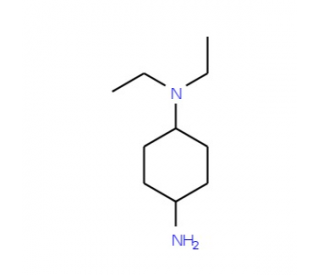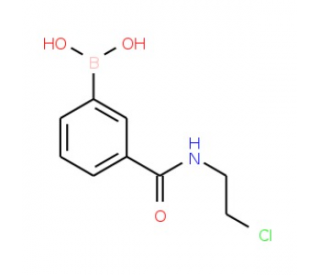详细说明
Species Reactivity
Mouse
Specificity
Detects mouse S1P 5/EDG-8 in Western blots.
Source
Recombinant Monoclonal Rabbit IgG Clone # 1196A
Purification
Protein A or G purified from cell culture supernatant
Immunogen
Mouse S1P 5/EDG-8 peptide corresponding to the N-terminal extracellular sequence
Accession # Q91X56Formulation
Lyophilized from a 0.2 μm filtered solution in PBS with Trehalose. *Small pack size (SP) is supplied as a 0.2 µm filtered solution in PBS.
Label
Unconjugated
Applications
Recommended
ConcentrationSample
Western Blot
1 µg/mL
See below
Flow Cytometry
0.25 µg/10 6 cells
See below
Please Note: Optimal dilutions should be determined by each laboratory for each application. are available in the Technical Information section on our website.
Data Examples
Western Blot | Detection of Mouse S1P5/EDG‑8 by Western Blot. Western blot shows lysates of HEK293 human embryonic kidney cell line either mock transfected or transfected with mouse S1P5. PVDF membrane was probed with 1 µg/mL of Rabbit Anti-Mouse S1P5/EDG‑8 Monoclonal Antibody (Catalog # MAB9084) followed by HRP-conjugated Anti-Rabbit IgG Secondary Antibody (Catalog # ). A specific band was detected for S1P5/EDG‑8 at approximately 75 kDa (as indicated). This experiment was conducted under reducing conditions and using . |
Flow Cytometry | Detection of S1P5/EDG‑8 in HEK293 Human Cell Line Transfected with Mouse S1P5/EDG-8 and eGFP by Flow Cytometry. HEK293 human embryonic kidney cell line transfected with mouse S1P5/EDG-8 and eGFP were stained with and either (A) Rabbit Anti-Mouse S1P5/EDG‑8 Monoclonal Antibody (Catalog # MAB9084) or (B) Normal Rabbit IgG Control (Catalog # ) followed by Phycoerythrin-conjugated Anti-Mouse IgG Secondary Antibody (Catalog # ). View our protocol for . |
Preparation and Storage
Reconstitution
Reconstitute at 0.5 mg/mL in sterile PBS.
Shipping
The product is shipped at ambient temperature. Upon receipt, store it immediately at the temperature recommended below. *Small pack size (SP) is shipped with polar packs. Upon receipt, store it immediately at -20 to -70 °C
Stability & Storage
Use a manual defrost freezer and avoid repeated freeze-thaw cycles.
12 months from date of receipt, -20 to -70 °C as supplied.
1 month, 2 to 8 °C under sterile conditions after reconstitution.
6 months, -20 to -70 °C under sterile conditions after reconstitution.
Background: S1P5/EDG-8
S1P 5 (Sphingosine-1 Phosphate receptor 5), also known as EDG-8 (Endothelial Differentiation Gene 8), is a 43-45 kDa member of the EDG family, S1P-binding subfamily of GPCRs. Along with S1P 1 -S1P 4 (or EDG-1, EDG-5, EDG-3 and EDG-6, respectively), S1P 5 is known to bind S1P, a lipid synthesized by platelets, neutrophils, smooth muscle cells, mast cells and select fibroblasts. Mouse S1P 5 is a 400 amino acid (aa) 7-transmembrane glycoprotein that is expressed on brain endothelium, renal mesangial cells, Ly6C + (in human CD14 +CD16 -) monocytes, pre- and mature oligodendrocytes, and CD27 -CD116 + (mature) NK cells. S1P 5 appears to play a role in cell trafficking. On monocytes and NK cells, S1P 5 promotes cell migration out of the bone marrow, a phenomenon that may not be related to an S1P concentration gradient. S1P 5 also helps maintain the integrity of the blood-brain-barrier. On oligodendrocytes and precursors, S1P 5 appears to regulate cell survival and pseudopod extension. The extracellular segment of mouse S1P 5 shares 96% and 94% aa sequence identity with rat and human S1P 5 extracellular domains, respectively.
Long Name:
Endothelial Differentiation Gene 8
Entrez Gene IDs:
53637 (Human); 94226 (Mouse); 60399 (Rat)
Alternate Names:
EDG8; Edg-8; EDG8S1P receptor Edg-8; Endothelial differentiation G-protein-coupled receptor 8; endothelial differentiation, sphingolipid G-protein-coupled receptor, 8; LPB4; S1P receptor 5; S1P5; S1PR5; sphingosine 1-phosphate receptor 5; sphingosine 1-phosphate receptor EDG8; Sphingosine 1-phosphate receptor Edg-8; sphingosine-1-phosphate receptor 5; SPPR-1; SPPR-2










 粤公网安备44196802000105号
粤公网安备44196802000105号